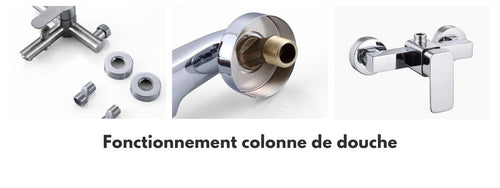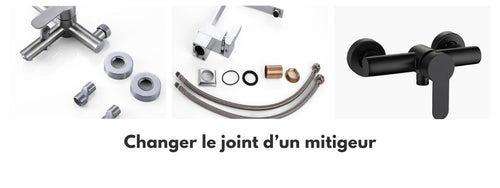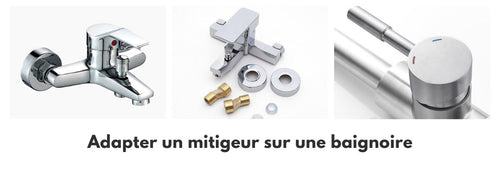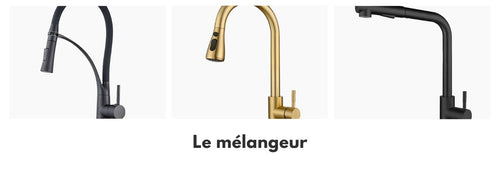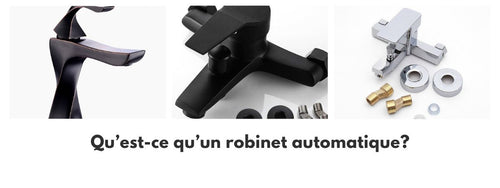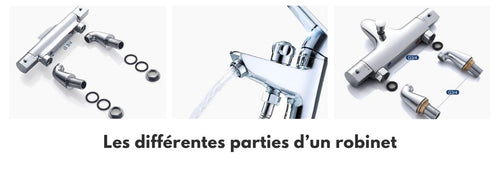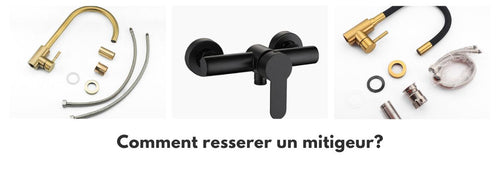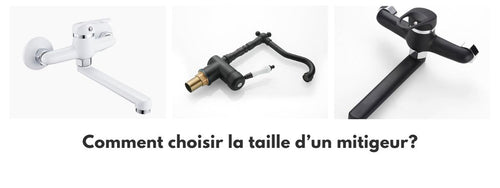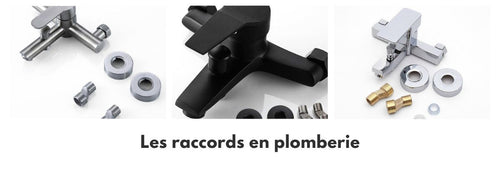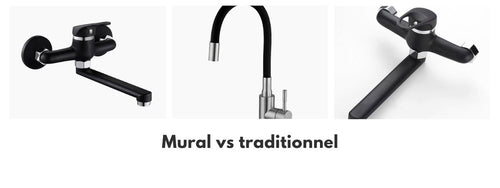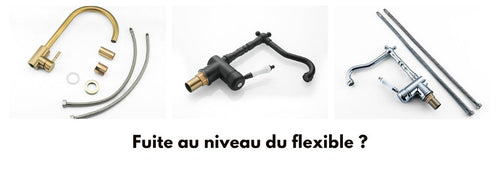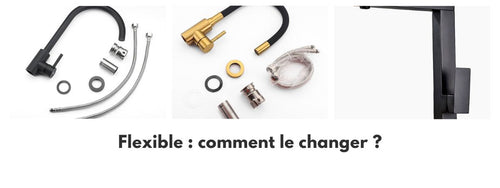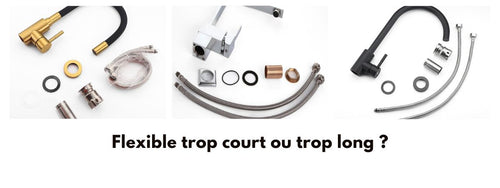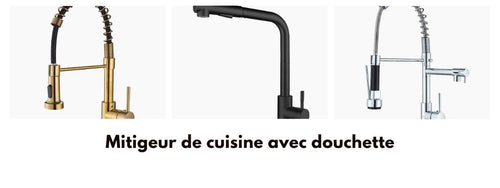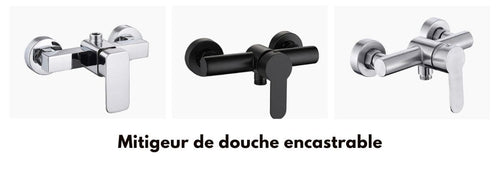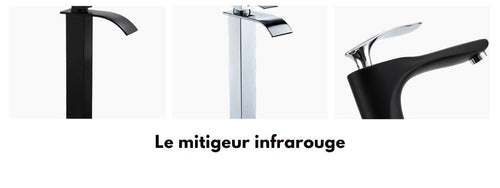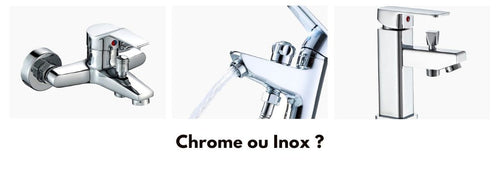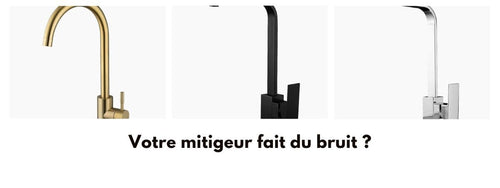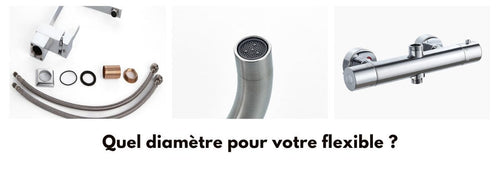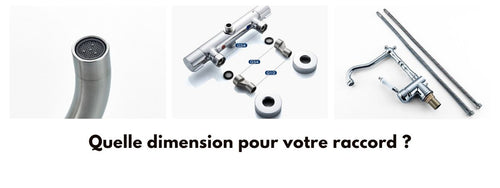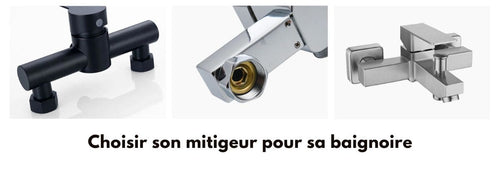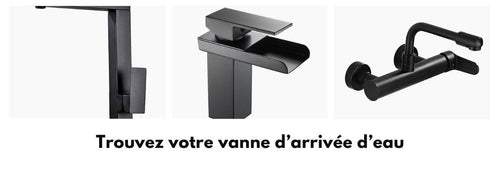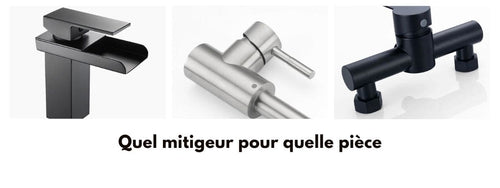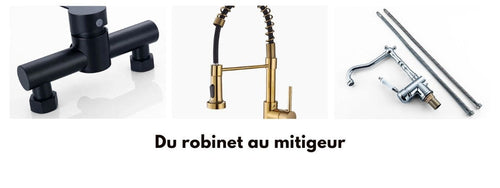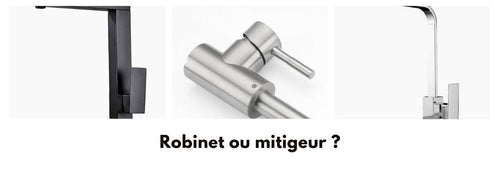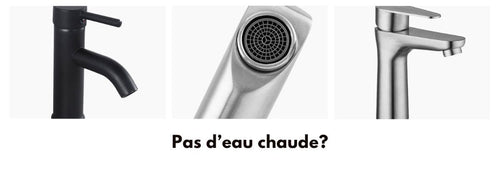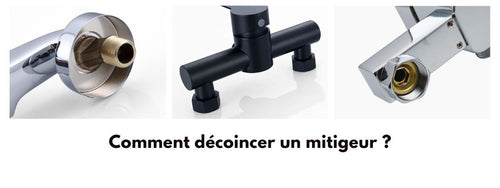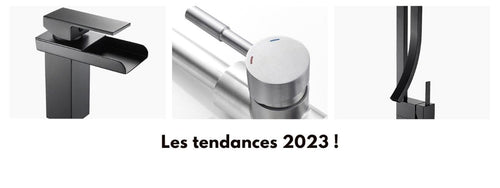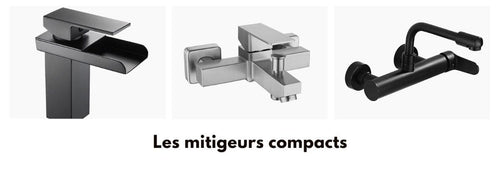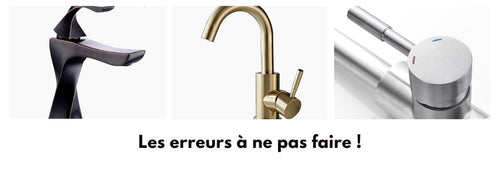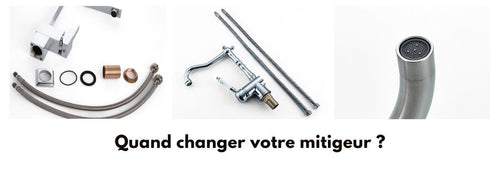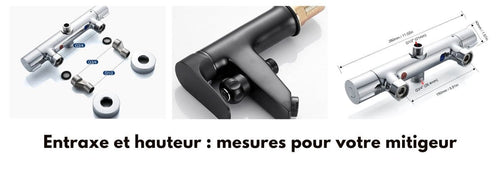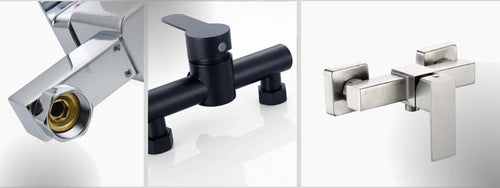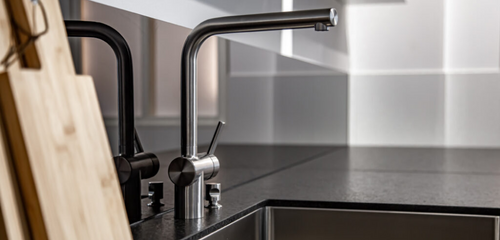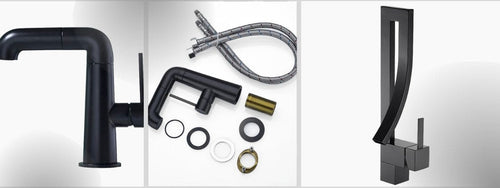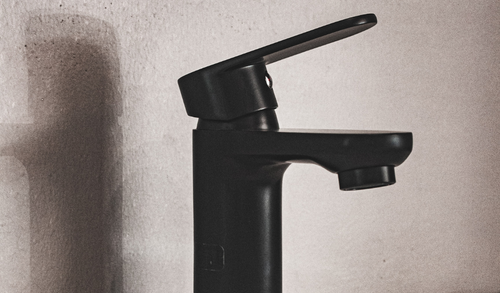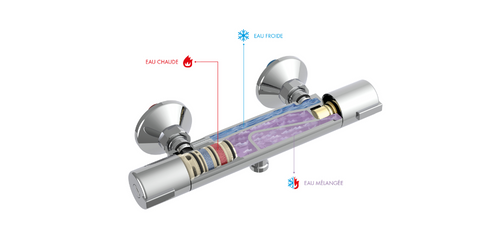You are considering replacing your old faucet, but you don't know how to go about it? You simply want to install a more modern and elegant mixer tap?
Removing a faucet is within the reach of any handyman. If you are trying to repair or replace a faucet and need to remove the one you have, it is important to follow a few steps to avoid accidentally flooding your kitchen, bathroom, or any other basin faucet.
In this article, you will learn:
- When to remove your faucet?
- What equipment is necessary?
- How to remove a kitchen faucet?
- How to remove a bathroom faucet?
- How to remove a shower faucet?
To know: The procedure will be slightly different depending on the type of faucet you are trying to remove.
Why remove your faucet?

The presence of a defective or obsolete kitchen faucet is an uncomfortable situation. In this case, you probably encounter difficulties when using your faucet. In the worst case, this can cause a water leak. This kind of inconvenience affects your comfort and leads to very expensive bills.
So you need to remove your faucet in order to replace it with a new one or to change a sealing ring. Replacing the kitchen faucet with a sprayer usually allows for significant water savings. In addition, this gives a fresh look to the style of your kitchen and improves the performance of your kitchen sink.
Here are other reasons that may lead you to remove your faucet:
Faucet problems related to a leaking cartridge
Many sinks are equipped with cartridge faucets. These devices use cartridges (or valves) to control the flow of water from the faucet, and some problems can occur in cartridge sinks. If your cartridge faucet is leaking, the cause may be a worn O-ring. If the O-ring of a sink is loose or worn, it can cause a leak at the handle level.
Another problem specific to kitchen faucets is cartridge wear. When these valves break or malfunction, they cause a faucet leak and must be replaced. In this case, you need to remove the old faucet to install a new one.
Corrosion and wear
Corrosion can occur when certain metals are exposed to water, and faucets are no exception. Various parts of a faucet can corrode over time, especially in the presence of dirt buildup. The valve seat, gaskets, or other components of your faucet may be the cause if you have a leak.
Some parts simply wear out over time; washers and other parts that are regularly subject to friction need to be replaced eventually. If you don't like DIY, a plumbing professional can help you determine the cause of your faucet leak and make the necessary repairs.
Water pressure and loose or broken parts
In the case of some sinks, corrosion may not be the culprit of a leaking or dripping faucet. If your sink only leaks when you adjust the handles, you may have a water pressure problem. Leaks that occur only at certain times of the day are another indicator of a domestic water pressure problem.
Finally, loose or broken faucet components are a common cause of leaks. If some parts can be repaired or replaced, sufficiently serious damage may require a new faucet.
What tools are needed to remove a faucet?
You don't need many tools to remove a faucet.
You will only need:
- a wrench
- a adjustable wrench
- a screwdriver
- a towel
- cleaning product for cleaning.
Before any intervention: Before showing you how to remove a faucet, it is important to specify that when the faucet leaks, changing the seal is sometimes sufficient. If this change is unsuccessful or if there is still dripping, you need to change the cartridge. This is a part made up of two ceramic discs and allows the water mixing system to function properly. The cartridge controls the hot water supply and the cold water inlet.
You should also plan for the appropriate replacement cartridge. Most faucets offer classic models, so it is better to buy the replacement cartridge once the old one is removed to be sure of the exact model.
What are the steps to remove a kitchen faucet?
Bathroom sinks, kitchen faucets, bathtub or basin faucets, and other accessories are everywhere. We use them every day, and yet most of us do not care about their maintenance until a problem occurs.
If you have a faucet that drips all night or if your sink is constantly covered with water, you will probably need to remove and repair the faucet. Here are the steps to follow to remove your kitchen faucet.
Let's start by looking at how to remove a kitchen faucet!
Step 1: Turn off the water
To remove a faucet, the first thing to do is to turn off the water supply. There should be two separate shut-off valves: one for hot water and one for cold water. You should see the valves where there is a connection between the water pipes and supply pipes that go up to the ends at the bottom of the faucet.
Close the two shut-off valves. If, for any reason, the valves do not work or are not present, you will need to turn off the water at the main shut-off valve of the house, near the water meter. (If the shut-off valves do not work or are absent, you must install new ones before installing the new faucet).
Make sure the water is turned off by opening the hot and cold water taps in the kitchen. There should be no water coming out of the faucet. Then you will need to flush the pipe by opening the faucet. Finally, you will need to plug the sink drain to ensure that the residue ends up in the pipe.
Step 2: Unscrew the nuts that connect the hoses to the water supply
After this step, take your wrench to unscrew the hoses from the water supplies. To ensure that you hold them firmly, you can use your adjustable wrench. Continue by removing the control rod of the drain using a screwdriver. If it is a sink, you will then need to remove the control rod of the drain.
Step 3: Remove the faucet mounting nuts
After that, remove the faucet fasteners. Once this is done, remove the faucet from its place and clean the hole to remove all dirt and scale. Finally, you can install your new faucet or replace the sealing ring of the old faucet.
When carrying out the work, please act with caution to avoid damaging anything. If you encounter any problems, do not hesitate to seek the help of a professional plumber. He can provide you with his expertise.
How to remove a bathroom faucet?

Now let's move on to the tutorial to learn how to remove a bathroom faucet!
To remove the bathroom faucet, you will need a screwdriver, a multi-grip pliers, and an adjustable wrench. Unlike some shower and kitchen faucets, which have a third handle to control a diverter valve, bathroom faucet casings have only one or two handles.
To know: Single-handle models are equipped with cartridge faucets, while two-handle models use compression faucets. Cartridge faucets are monoblock models that cannot be disassembled, but replacement cartridges are generally not expensive. On the other hand, compression faucets can be disassembled and repaired.
First and foremost, turn off the water supply
Before removing your faucet, it is very important that you shut off the shut-off valve. It is usually located under the sink. Make sure the water is completely shut off, otherwise you risk damaging your installations.
Remove the faucet and handles
Phase 1: Place a towel in your sink to prevent scratching or damaging your faucet in case you drop it. First, carefully remove the handle using a flat screwdriver to remove the cap, button, or plug at the top of the handle.
Phase 2: There should be a screw just below the decorative piece, and you will need to unscrew it, then remove the faucet. After that, you can remove the handle to access the cartridge. If you notice limescale on a part, do not hesitate to use white vinegar to remove it.
Phase 3: Take notes as you remove each accessory to remember the location of each part and be able to reassemble them easily. If you need to buy spare parts for your faucet, take note of the manufacturer's name and take the parts with you to make sure you get the right parts.
How to remove a shower faucet?
Now let's see how to remove a shower faucet!
Step 1: Remove the cartridge
If you have to pull the handle of your shower faucet to turn on the water, it means that the faucet is equipped with a cartridge. If the faucet leaks or if you cannot adjust the temperature, you generally need to remove the cartridge and clean it or replace the O-rings and gaskets.
Remove the cap that covers the handle screw with a flat screwdriver. Underneath, you will find a Phillips screw. After loosening and removing it with a Phillips screwdriver, you should be able to remove the handle. Handles with a lever are held by a screw with a hex head located under the faucet. Remove it with an adjustable wrench. The next step is to remove the cartridge from the housing. You can do this with pliers.
Step 2: Loosen the nuts connecting the pipes to the water supply
Before removing the faucet, you need to first remove the fittings that connect the pipes to the hot and cold water supply lines. Using an adjustable wrench, unscrew the nuts connecting the pipes to the supply lines and remove the fiber gasket. If you need to restore water before installing your new faucet, you must close the water supply lines with a collector cap.
Step 3: Separate the control rod from the drain
In order to remove the faucet, the control rod of the drain must also be separated from the body of the faucet mechanism. To do this, use a screwdriver to loosen the screw that connects the control rod of the drain to the spherical joint. Leave the screw in the thread so it doesn't get lost. Now remove the control rod of the drain by lifting it vertically.
Step 4: Remove the faucet fasteners under the sink or bathtub
To remove your faucet, you need to remove the fasteners that attach it to its support. Use your adjustable wrench to unscrew the fastening nut that holds the faucet in place. Remove the support that detaches if your installation has one. After that, you can remove the sealing ring.
Step 5: Remove the faucet
Since the faucet is no longer connected to the sink or water supply system, you just need to remove it by hand. If necessary, you can use a cleaning product suitable for this surface to clean the area where the faucet is located, showing traces of dirt and limescale.
Make sure the hoses are in good condition: if none of them are damaged, they can be used for the new faucet to be installed. Generally, you will need to replace the gaskets you removed with new ones.
To your tools, to your faucets!
Removing a faucet allows you to examine the parts to determine which ones need to be replaced and any other necessary repairs. Whatever type of faucet you are removing, you must first shut off the faucet under the sink or at the main supply of the house.
Then open the faucet and let all the water flow out. Place a towel in the siphon so that no part can fall into it. Be careful of the order in which you remove the parts so that you can reassemble the faucet without difficulty. If you are not skilled in plumbing work, you can call a professional plumber to assist you.



